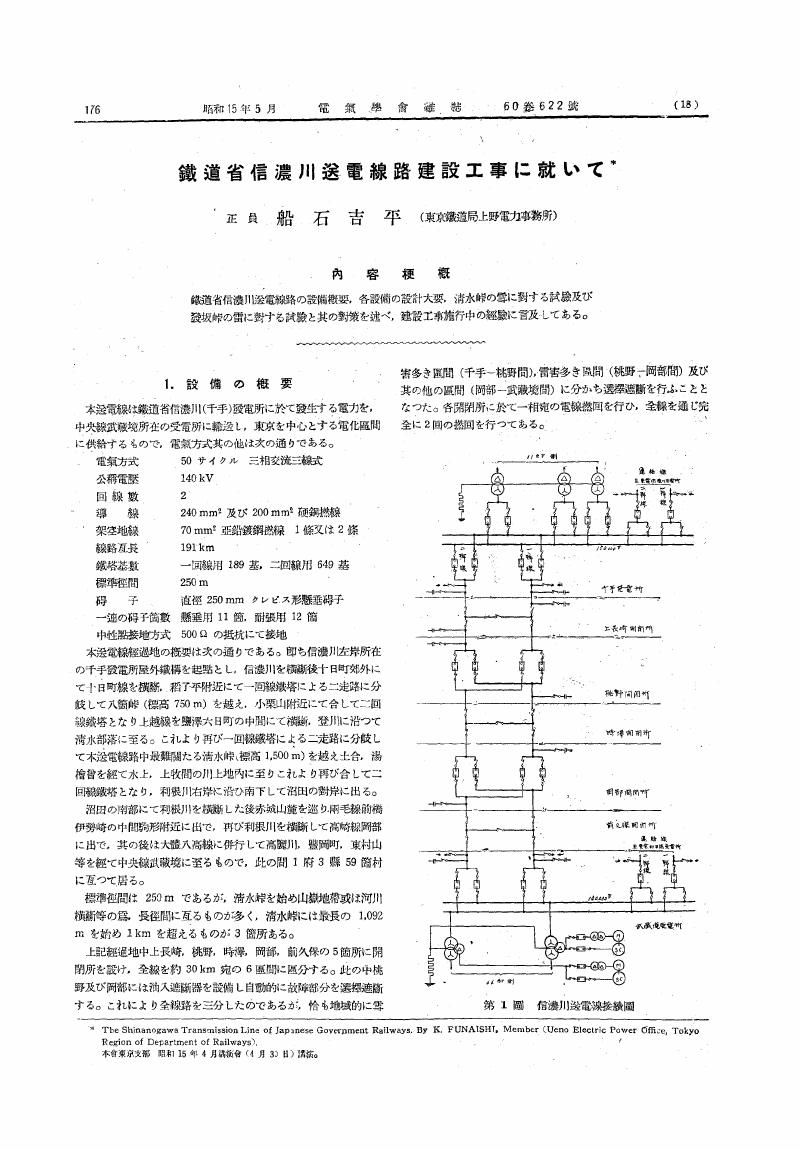- 著者
- Masamichi Ohba Hiroaki Ueda
- 出版者
- (公社)日本気象学会
- 雑誌
- SOLA (ISSN:13496476)
- 巻号頁・発行日
- vol.2, pp.176-179, 2006 (Released:2006-12-26)
- 参考文献数
- 16
- 被引用文献数
- 15 47
Interannual fluctuations of the convective activity around the Philippines are highly correlated with the east-west gradient of SST between the North Indian Ocean (NIO) and the western North Pacific (WNP). We conducted a set of experiments by use of an atmospheric general circulation model (AGCM) to assess the relative importance of the remote (NIO) versus in situ (WNP) SST anomalies in determining the WNP monsoon rainfall as ocean-to-atmosphere feedback. The solutions indicate that both in situ and remote SST anomalies regulate precipitation around the Philippines in the early summer. This result implies that the WNP monsoon rainfall is sensitive to the spatial distribution of the NIO SST anomalies as well as the in situ anomalies. These physical interpretations suggest further increase of the predictability in the WNP monsoon.
1 0 0 0 OA 理想化海陸分布を持つ大気大循環モデルに現れる夏期モンスーンの急な開始およびその季節進行
- 著者
- 謝 尚平 佐伯 なおみ
- 出版者
- (公社)日本気象学会
- 雑誌
- 気象集誌. 第2輯 (ISSN:00261165)
- 巻号頁・発行日
- vol.77, no.4, pp.949-968, 1999-08-25 (Released:2008-01-31)
- 参考文献数
- 57
- 被引用文献数
- 3 57
世界最大の砂漠と最大のモンスーン域は共にほぼ同じ緯度のアフリカ・ユーラシア大陸の亜熱帯に存在する。このような降水の東西分布の形成機構を調べるために、大気大循環モデルを用いて理想化した海陸分布の下で実験を行った。特にここではアジア大陸の南岸を北緯17度線に沿って東西真っ直ぐに設定した。山岳がなく、また海面水温と陸面パラメータが東西一様であるにも関わらず、夏期の降水は亜熱帯大陸の東部で多く、西部で少ない。このような降水分布の東西非一様性は夏期の海洋上に現れる高気圧の水蒸気輸送によると考えられる。更に、降水と土壌水分のゆっくりとした相互作用はモンスーン降水帯の北進を遅らせ、土壌水分が十分に増加する前に、太陽放射の強制によって降水帯は南下し、大陸内部まで進入できない。太陽放射を夏の値に固定した実験では、モンスーン降水帯が徐々に北進し、北アフリカ全域をカバーするようになった。モデルのモンスーン降水は6月後半に突然大陸南岸に現れる。このようなモンスーンの急な開始は西進する波動の発達に伴って起きる。春分後、暑い大陸と冷たい海洋間に北向きの温度傾度が大気下層で形成され、時間と共に強化されていく。この下層の南北温度傾度は偏東風シアーとほぼ温度風バランスをしており、背の高い南北モンスーン循環は形成されない。しかし、このような温度風バランスは最終的には傾圧的に不安定になり、湿潤傾圧不安定の爆発的な成長によってモンスーンが始まる。
1 0 0 0 IR 特集:シンポジウム 奄美の地域づくりとヤジの再生--リュウキュウアユフォーラム2007
- 出版者
- 鹿児島大学
- 雑誌
- 奄美ニューズレター (ISSN:13488872)
- 巻号頁・発行日
- no.34, pp.11-39, 2008-03
- 著者
- 尾澤 恵
- 出版者
- 国立社会保障・人口問題研究所
- 雑誌
- 季刊社会保障研究 (ISSN:03873064)
- 巻号頁・発行日
- vol.41, no.4, pp.368-384, 2006
1 0 0 0 日本経済の動向と発現が困難な「経済の好循環」
- 著者
- 田中 信孝
- 出版者
- 地方自治総合研究所
- 雑誌
- 自治総研 (ISSN:09102744)
- 巻号頁・発行日
- vol.41, no.7, pp.32-50, 2015-07
- 著者
- プラスティョ ボウォ プラムディオノ イコ 喜連川 優
- 出版者
- 一般社団法人電子情報通信学会
- 雑誌
- 電子情報通信学会技術研究報告. DE, データ工学 (ISSN:09135685)
- 巻号頁・発行日
- vol.105, no.172, pp.49-54, 2005-07-07
H-mineはスパースなデータセットに対して高性能と知られているメモリベースマイニングアルゴリズムであるが, 動的H-structリンク調整というH-mine特有の処理は並列化を困難にする.本論文ではH-structリンク調整を一切必要としない改善されたアルゴリズムを提案する.提案アルゴリズムは, オリジナルバージョンと匹敵する性能を持ちながら, 並列処理に容易に拡張することが可能となる.
1 0 0 0 全国高専ロボコンに参加して(学生の声)
- 著者
- 小関 紘明
- 出版者
- 日本高専学会
- 雑誌
- 日本高専学会誌 : journal of the Japan Association for College of Technology (ISSN:18845444)
- 巻号頁・発行日
- vol.19, no.1, pp.39-42, 2014-01-31
1 0 0 0 OA SYSTEMIC INFLAMMATORY RESPONSE SYNDROME AND POSTOPERATIVE COMPLICATIONS AFTER ORAL CANCER SURGERY
- 著者
- YASUTOMO YAJIMA HIROYASU NOMA KIYOHIRO KASAHARA EIZO TAKEDA
- 出版者
- 東京歯科大学
- 雑誌
- The Bulletin of Tokyo Dental College (ISSN:00408891)
- 巻号頁・発行日
- vol.41, no.4, pp.187-194, 2000 (Released:2007-02-01)
- 参考文献数
- 13
- 被引用文献数
- 4 4
Systemic inflammatory response syndrome (SIRS) symptoms immediately after surgery have lately been regarded as potential warnings of impending postoperative complications and multiple organ failure. Reports discussing the relationship between operative stress and SIRS are found in the field of digestive surgery, but not in that of oral surgery. Forty oral cancer cases who had undergone neck dissection (Level III or higher) from January 1998 to June 1999 were involved in this study. We assigned 16 cases who met two of the several diagnostic criteria for SIRS and continued to meet them for at least 24 hours after surgery to the SIRS group. The other 24 patients were assigned to the non-SIRS group. Postoperative complications occurred in 56.3% of the SIRS group and 8.3% of the non-SIRS group (p<0.05). In two cases, the postoperative fluctuation of IL-6 level was evaluated. These results suggest the importance of careful management of postoperative SIRS patients to prevent complications.
1 0 0 0 A transposon in sertion in the Arabidopsis SSR16 gene causes an embryo-defective lethal mutation
- 著者
- TSUGEKI R.
- 雑誌
- The Plant J.
- 巻号頁・発行日
- vol.10, pp.479-489, 1996
- 被引用文献数
- 3 91
- 著者
- 村山 信雄 榊原 一夫 永田 雅彦
- 出版者
- Japanese Society of Veterinary Dermatology
- 雑誌
- 獣医臨床皮膚科 (ISSN:13476416)
- 巻号頁・発行日
- vol.12, no.4, pp.239-241, 2006
- 被引用文献数
- 1
6歳齢,避妊雌のメイン・クーンの両耳介と外耳道に暗青色を呈した丘疹と結節を多数認め,耳道は狭窄していた。これら皮疹は幼少よりみられ,徐々に拡大した。病理組織学的検査で耳垢腺の拡張と内腔分泌物の貯留を認めた。全身症状はなく,血液検査の異常も認められなかった。以上よりFeline ceruminous cystomatosisと診断した。0.05%クロルヘキシジン液による洗浄とオフロキサシン・ケトコナゾール・トリアムシノロンアセトニド配合薬の点耳により,1年後に明らかな改善を認めた。<br>
1 0 0 0 OA 鐵道省信濃川送電線路建設工事に就いて
- 著者
- 船石 吉平
- 出版者
- 一般社団法人 電気学会
- 雑誌
- 電氣學會雜誌 (ISSN:00202878)
- 巻号頁・発行日
- vol.60, no.622, pp.176-184, 1940-05-10 (Released:2008-11-20)
1 0 0 0 「唐大和上東征伝」の解読本文
- 著者
- 木村 晟
- 出版者
- 駒澤大学
- 雑誌
- 駒沢大学文学部研究紀要 (ISSN:04523636)
- 巻号頁・発行日
- no.42, pp.p63-117, 1984-03
- 著者
- 松谷 実のり
- 出版者
- 社会学研究会
- 雑誌
- ソシオロジ (ISSN:05841380)
- 巻号頁・発行日
- vol.60, no.2, pp.95-113, 2015
<p>国内の雇用再編の中で周縁化された若者の一部には、リスクを取ってチャンスにかける志向が見られる。その一例が、現地採用者として上海で働く若者である。彼らは日本企業の本社が派遣する駐在員とは異なり、人材紹介会社を利用して上海の日系企業と直接雇用契約を結ぶ。本稿ではメゾレベルの移住のメカニズムとミクロな個人の動機の交錯に注目し、現地採用という特殊な雇用制度の仕組みとそれが拡大してきた経緯を明らかにする。その上で、当該雇用制度の特徴と若者がそれを選択する理由との関係に言及する。移住システム論に依拠しながら、制度を整備した人材紹介会社、移住労働者を必要とする日系企業、制度を戦略的に利用しようとする若者の三者の関係に注目する。 人材紹介会社は、日本から若者を送り出す労働力の供給システムを整備した。日系企業は制度の整備を受け、企業内での従業員の再配置(=駐在員の派遣)から外部労働市場を利用した柔軟な労働力の取り込み(=現地採用)へと、雇用を流動化させつつある。この結果、日系企業の需要に合わせた特殊な労働市場が海外に形成された。日系企業の進出と撤退に伴い、この労働市場も短期間で拡大・縮小するが、移住システムの枠組は新たな資本投下先に移植されることで再生産されている。 他方で、若者は予測不可能な環境へ飛び出すことで、日本の労働市場における閉塞感を打破しようとする。彼らは自らの持つ資本と移住のコストやリスクを照らし合わせ、現実的かつ暫定的な戦略として現地採用を選択する。このとき、日系企業への労働力供給システムを貫く資本の論理と、潜在的な可能性に投機しようとする若者の積極性は、一時的に合致する。</p>
1 0 0 0 OA ノーベル賞と企業の研究所
- 著者
- 武石 喜幸
- 出版者
- 公益社団法人 応用物理学会
- 雑誌
- 応用物理 (ISSN:03698009)
- 巻号頁・発行日
- vol.55, no.11, pp.1023-1023, 1986-11-10 (Released:2009-02-09)
1 0 0 0 OA 赤外線画像解析による『世界四大洲新地図帳』の書誌的研究
1 0 0 0 OA 地域政策と空間構造-企業活動に基づいた都市圏域の設定-
- 著者
- 林 亮輔
- 出版者
- 九州地区国立大学間の連携事業に係る企画委員会リポジトリ部会
- 雑誌
- 九州地区国立大学教育系・文系研究論文集
- 巻号頁・発行日
- vol.3, no.1, pp.No.16, 2015-10
民間経済活動が行政区域を越えて行われている今日、地域政策は一体性の強い地域を対象に行う必要がある。しかし、民間の経済活動には様々な側面があるにもかかわらず、わが国においては学術的にも政策的にも、職場と居住地からなる通勤圏を都市圏とすることが多い。そこで本稿では、企業活動に基づいた都市圏である企業活動圏を法人使用車移動率によって設定し、金本・徳岡(2002)において設定されている都市雇用圏(通勤圏)と比較した。その結果、都市雇用圏は、中心都市と郊外都市が互いに隣接し合いながら形成されているのに対し、企業活動圏は、高速道路の存在により、郊外都市が点在しながら圏域が形成されていることが明らかになった。このように経済活動によって、一体性を持った都市圏域が大きく異なるという事実は、研究や政策の目的に応じて都市圏域を設定することの重要性を示している。
1 0 0 0 つながれインフォプロ 第14回
- 著者
- 今野 創祐 中込 栞 八木澤 ちひろ
- 出版者
- 国立研究開発法人 科学技術振興機構
- 雑誌
- 情報管理 (ISSN:00217298)
- 巻号頁・発行日
- vol.57, no.8, pp.584-587, 2014
1 0 0 0 OA 日本社会における華僑教育の実態について : 全日制華僑学校教育を中心に
- 著者
- 裘 暁蘭
- 出版者
- 早稲田大学大学院教育学研究科
- 雑誌
- 早稲田大学大学院 教育学研究科紀要 別冊 (ISSN:13402218)
- 巻号頁・発行日
- vol.12, no.1, pp.215-226, 2004-09-30

